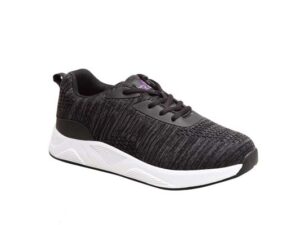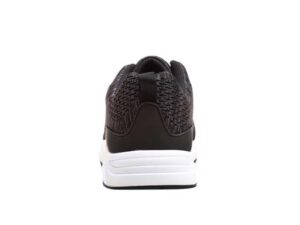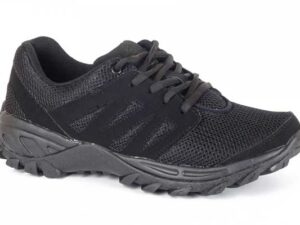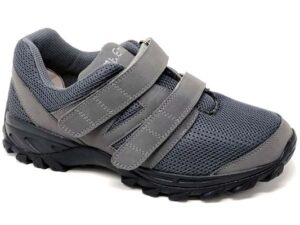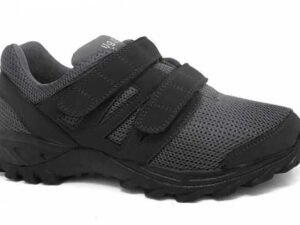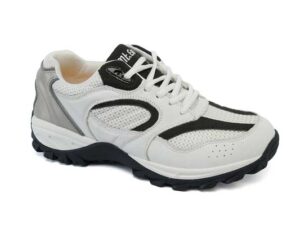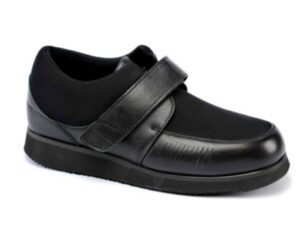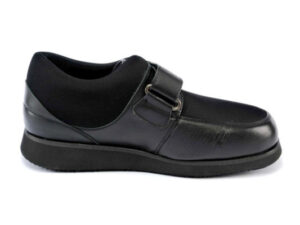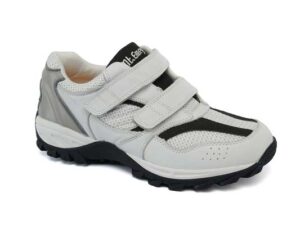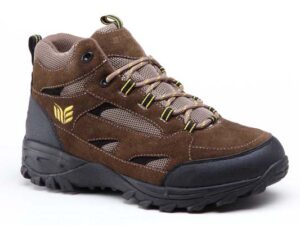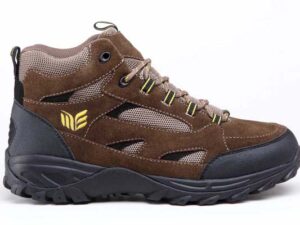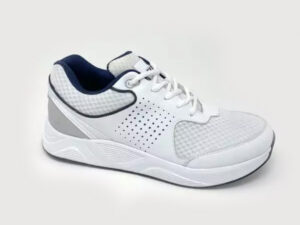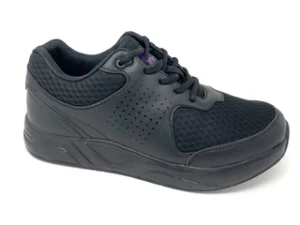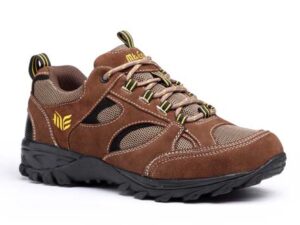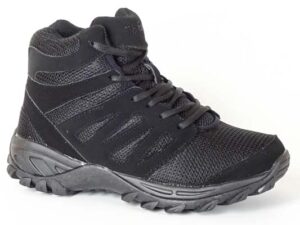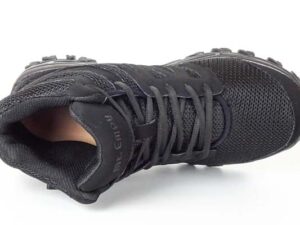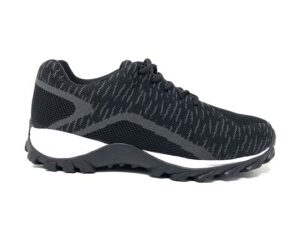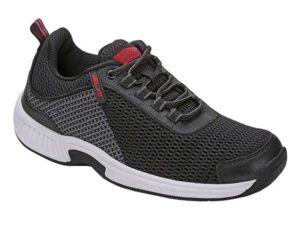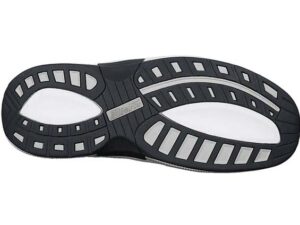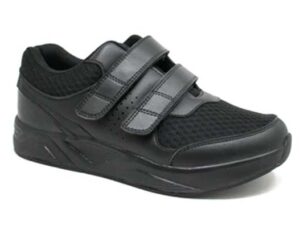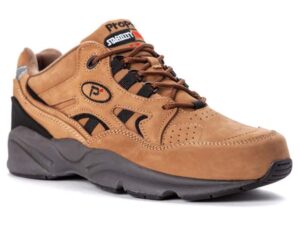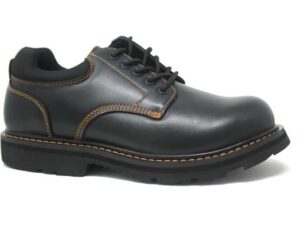Managing Plantar Fasciitis effectively requires a combination of the right footwear and supportive inserts. This condition, known for causing heel pain, is often alleviated by shoes that provide proper support, cushioning, and a well-designed structure. Equally important are inserts, which offer additional, personalized comfort and targeted relief. This article explores the integral roles both shoes and inserts play in mitigating Plantar Fasciitis symptoms, guiding you towards making informed choices for your foot health.
Table Summary
| Topic | Key Points |
|---|---|
| Role of Shoes and Inserts | Essential in reducing Plantar Fasciitis symptoms |
| Ideal Shoe Features | Supportive arch, cushioning, wide toe box |
| Importance of Inserts | Personalization, targeted support, enhanced comfort |
| Choosing the Right Combination | Factors to consider, recommended brands |
Understanding the synergy between shoes and inserts is crucial in your journey towards better foot health.
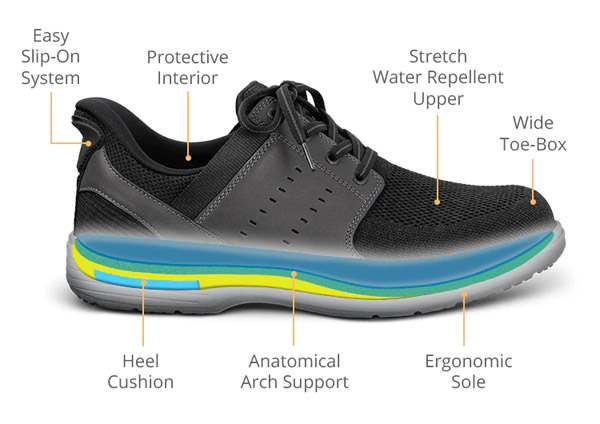
The Synergy of Shoes and Inserts in Managing Plantar Fasciitis
The Fundamental Role of Proper Footwear
The importance of proper footwear extends far beyond mere fashion or personal preference; it is a crucial factor in maintaining overall foot health and comfort, especially for those suffering from conditions like Plantar Fasciitis.
Key Benefits of Proper Footwear:
- Supports Foot Structure: Proper footwear provides essential support to the foot’s natural structure. This support is especially important for the arches, which bear the brunt of our body weight. Well-designed shoes help in distributing this weight evenly, reducing the risk of overpronation (excessive inward rolling of the foot) or supination (outward rolling).
- Prevents Foot Conditions: Ill-fitting or unsupportive shoes can lead to a variety of foot problems, such as bunions, corns, calluses, and, of course, exacerbating Plantar Fasciitis. Proper footwear helps in preventing these conditions by offering a snug but comfortable fit, avoiding undue pressure or friction.
- Enhances Walking and Running Efficiency: Shoes with the right fit and design can significantly improve your walking and running efficiency. They aid in the proper alignment of your foot and ankle, which in turn can positively affect your gait and posture.
- Reduces Risk of Injury: Footwear that provides adequate cushioning and support can reduce the risk of injuries, not just to the feet but also to the knees, hips, and back. This is particularly crucial for athletes or individuals engaged in regular physical activities.
- Accommodates Special Needs: For individuals with specific foot conditions like high arches, flat feet, or those who require orthopedic support, proper footwear is non-negotiable. It accommodates these special needs and helps in managing symptoms effectively.
- Improves Comfort and Endurance: Comfortable shoes contribute significantly to overall endurance and performance in daily activities. When your feet are well-supported and comfortable, you can stand, walk, or engage in activities for longer periods without discomfort.
Why Proper Footwear is Essential
Proper footwear is not just a matter of comfort but a vital aspect of health and well-being. It plays a critical role in aligning our feet, ankles, knees, hips, and back, ensuring our entire body works harmoniously. Especially for those with foot conditions like Plantar Fasciitis, the right shoes can mean the difference between chronic pain and relief. They are the foundation on which we stand and move, and as such, choosing the right shoes is an investment in our overall quality of life.
Inserts: Enhancing Shoe Functionality
While the right shoes provide a fundamental base for foot support and comfort, the role of inserts in enhancing this functionality cannot be overstated. Inserts, also known as insoles or orthotics, are an invaluable addition to footwear, especially for individuals with specific foot conditions like Plantar Fasciitis.
Key Benefits of Inserts:
- Customized Support: Inserts allow for a higher degree of customization in footwear. They can be tailored to fit the unique contours of an individual’s foot, providing targeted support where it’s needed most. This is particularly beneficial for those with unusual foot shapes or specific alignment issues.
- Enhanced Comfort: Inserts can significantly improve the comfort level of shoes. They add extra cushioning, which can be a relief for people who spend long hours on their feet or have conditions that cause foot discomfort.
- Improved Alignment and Biomechanics: Properly designed inserts help in aligning the foot and ankle, positively impacting the entire lower body’s biomechanics. This can lead to reduced pain and strain not only in the feet but also in the knees, hips, and lower back.
- Prevents and Alleviates Foot Problems: Inserts can play a proactive role in preventing foot problems like corns, calluses, and bunions. For those already suffering from conditions like Plantar Fasciitis, they can provide significant symptom relief.
- Versatility and Adaptability: Inserts can be used in various types of footwear, making them versatile. They can be moved from one pair of shoes to another, providing consistent support regardless of the shoe style or design.
- Extended Shoe Life: By improving the internal fit and function of shoes, inserts can also help extend the life of your footwear. They reduce the internal wear and tear of shoes, ensuring they last longer.
The Importance of Inserts in Foot Health
The importance of inserts lies in their ability to fine-tune the support and comfort provided by shoes. They bridge the gap between the generic design of mass-produced footwear and the specific needs of an individual’s feet. In cases like Plantar Fasciitis, where specific areas of the foot need more support or cushioning, inserts can make a significant difference. They are not just an accessory but an integral component of foot health management, complementing the functionality of shoes and enhancing the overall foot care regimen.
Integrating Shoes and Inserts for Optimal Relief
The combination of well-selected shoes and appropriately chosen inserts creates a powerful duo in providing relief and support, especially for individuals with Plantar Fasciitis. This integration is not just about using both but understanding how they work together to offer the best possible outcome for foot health and comfort.
Synergistic Benefits of Shoes and Inserts
- Comprehensive Support: When shoes and inserts are used together, they provide comprehensive support to the feet. Shoes offer the external structure and basic support, while inserts fill in the gaps, offering additional, more personalized support where needed.
- Enhanced Comfort and Fit: Inserts can enhance the comfort provided by shoes. They can adjust the fit of a shoe, making it snugger or more spacious as required, leading to an overall better and more comfortable fit.
- Targeted Pain Relief: For specific conditions like Plantar Fasciitis, the combination of shoes and inserts can target pain relief more effectively. Shoes can provide the general cushioning and support, while inserts can focus on the specific areas of the foot that require extra attention.
- Adaptability to Changing Needs: Feet can change over time due to age, health conditions, or even daily activities. The combination of shoes and inserts allows for adaptability to these changing needs. As the requirements of your feet change, so can the combination of your footwear and inserts.
- Improved Functional Alignment: Together, shoes and inserts can improve the functional alignment of the feet, ankles, and, by extension, the entire lower body. This can lead to better posture, reduced strain on the joints, and overall improved body mechanics.
- Prevention of Further Foot Issues: This combination not only helps in alleviating current foot issues but also plays a vital role in preventing potential future problems. Proper support and alignment can prevent the development of new foot conditions.
The Critical Role of Integrating Shoes and Inserts
Integrating shoes and inserts is critical in achieving optimal foot health, especially for those with Plantar Fasciitis. It’s about creating a customized solution that addresses both general and specific needs. While shoes provide the foundational support, inserts bring in the necessary customization and additional support. This integrated approach ensures that the feet are not only comfortable and pain-free but also well-positioned for long-term health and functionality. It’s a proactive step towards maintaining foot health, enhancing mobility, and improving the quality of life.
Selecting the Best Shoes for Plantar Fasciitis
Understanding Your Foot Dynamics
Accurate foot measurements and an understanding of your specific foot condition are crucial in choosing the right shoes. Brands like Apis, Orthofeet, and Propet offer wide ranges that cater to various needs.
The Right Features in Shoes
When it comes to selecting shoes, especially for those dealing with Plantar Fasciitis, certain features are non-negotiable for ensuring maximum support and comfort. Understanding these key features can help in choosing footwear that not only alleviates pain but also contributes to overall foot health.
Essential Features of Shoes for Plantar Fasciitis
- Supportive Arch: One of the most critical features is a supportive arch. This helps in distributing pressure across the foot more evenly, reducing stress on the plantar fascia. Shoes with proper arch support can significantly lessen the pain associated with Plantar Fasciitis.
- Cushioned Sole: A cushioned sole absorbs impact, providing relief during walking or standing. This is particularly important for those with Plantar Fasciitis, as it minimizes stress on the heel and the rest of the foot.
- Wide Toe Box: Shoes with a wide toe box allow the toes to spread naturally without constriction, reducing pressure on the front of the foot and preventing conditions like bunions and hammertoes, which can exacerbate Plantar Fasciitis.
- Heel Support: Adequate heel support is essential. A deep heel cup in shoes ensures stability and helps in maintaining correct foot alignment, further reducing strain on the plantar fascia.
- Breathable Material: Shoes made from breathable materials like leather or mesh allow for air circulation, keeping the feet dry and comfortable, thus preventing skin irritation and blisters.
- Flexibility and Stability: A balance between flexibility and stability in shoes is vital. While flexibility allows for natural foot movement, stability, especially in the midfoot area, is crucial for preventing excessive foot motion, which can aggravate Plantar Fasciitis.
Why These Features Matter
Each of these features plays a specific role in providing the foot with the support and comfort it needs, especially when dealing with a condition like Plantar Fasciitis. Supportive arches and cushioned soles address the direct needs of the plantar fascia, while a wide toe box and breathable materials contribute to overall foot comfort and health. The right combination of flexibility and stability ensures that the foot moves naturally while being adequately supported. By prioritizing these features when selecting shoes, individuals with Plantar Fasciitis can experience significant relief and a reduction in symptoms, allowing for greater mobility and an improved quality of life.
The Role of Inserts in Customization
Inserts play a significant role in tailoring the fit and support of your shoes. They can be particularly beneficial for those who require specific arch support or additional cushioning.
Now, let’s explore the benefits of investing in this combination of shoes and inserts for long-term foot health.
Benefits of the Right Shoes and Inserts
Customization for Personalized Comfort
Custom-fitted shoes, when combined with the right inserts, provide a level of comfort tailored to your foot’s unique needs, crucial for managing Plantar Fasciitis. Many shoes come with double insoles or spaces to help create a perfect fit.
Improved Foot Alignment and Pain Relief
This combination ensures better foot alignment, reducing strain on the plantar fascia. It’s an effective strategy for mitigating pain and discomfort.
Proactive Approach to Long-Term Foot Health
Investing in both well-fitted shoes and suitable inserts is a proactive step towards maintaining good foot health, preventing further complications associated with Plantar Fasciitis.
Next, let’s guide you through the process of choosing the right pair of shoes and inserts for your specific needs.
Choosing the Right Shoes and Inserts
Assessing Your Individual Needs
Choosing the right shoes and inserts for Plantar Fasciitis, or any foot condition, begins with a thorough assessment of your individual needs. This step is crucial in ensuring that the footwear you select not only provides relief from current symptoms but also helps in preventing future foot problems.
Key Factors in Assessing Footwear Needs
- Understanding Your Foot Type and Condition: Everyone’s feet are unique, with variations in shape, size, arch type, and specific conditions. Understanding your foot type, whether you have high arches, flat feet, or normal arches, is crucial. Additionally, recognizing any specific conditions like Plantar Fasciitis, bunions, or corns is essential in selecting the right footwear and inserts.
- Daily Activities and Lifestyle: The type of activities you engage in daily significantly influences your footwear needs. Someone who spends most of the day on their feet, like a healthcare professional or a retail worker, may have different requirements than someone who has a more sedentary lifestyle.
- Severity of Symptoms and Comfort Requirements: The severity of your Plantar Fasciitis symptoms can dictate the level of support and cushioning needed. Those with more severe symptoms may require shoes with more substantial arch support and a softer, more cushioned insert.
- Footwear History and Preferences: Past experiences with certain shoe types or brands can guide future choices. Your comfort with certain styles, fits, or materials can also play a role in determining the best footwear for your needs.
- Measurements and Professional Assessments: Accurate foot measurements are essential. Regular measurements are recommended as foot size and shape can change over time. Additionally, seeking a professional assessment, such as from a podiatrist or a footwear specialist, can provide valuable insights.
The Importance of a Personalized Approach
Assessing your individual needs is about taking a personalized approach to foot health. It involves considering a multitude of factors, from physical foot characteristics to lifestyle choices. This comprehensive assessment ensures that the shoes and inserts you choose not only provide relief from Plantar Fasciitis but also support your overall foot health and well-being. By taking the time to understand your specific needs, you can make informed decisions about your footwear, leading to better foot health and improved quality of life.
Importance of the Right Inserts
Choose inserts that complement the features of your shoes. They should provide the specific type of support and cushioning your feet require.
In the conclusion, we’ll recap the importance of this holistic approach to managing Plantar Fasciitis.
Final Thoughts
Choosing the best shoes and inserts for Plantar Fasciitis is essential for effective management of the condition. The right combination of supportive, well-fitted shoes and personalized inserts can significantly alleviate pain and enhance foot health. Remember, it’s not just about immediate comfort; it’s about taking proactive steps towards long-term wellbeing.
For tailored advice on selecting the right shoes and inserts for your needs, contact a Fitment Specialists. They are here to guide you towards happy feet and a pain-free lifestyle. Remember, the journey to better foot health starts with the right combination of shoes and inserts.

